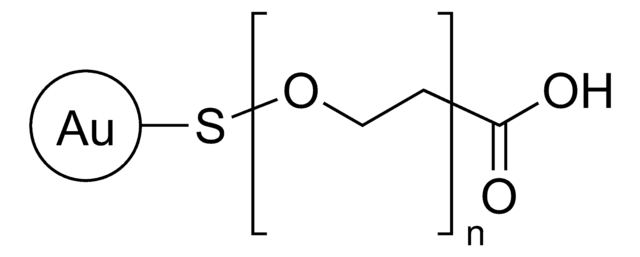808628
Gold nanoparticles
5 nm diameter, biotin terminated, PEG 5000 coated, OD 50, dispersion in H2O
Synonym(s):
Biotin Gold
About This Item
Recommended Products
material
PEG 5000
Quality Level
form
dispersion in H2O
nanoparticles
packaging
pkg of 0.5 mL
OD
50
surface area
6.18 m2/g
diameter
5 nm
pH
5-7
density
1.00 g/cm3
λmax
513-517 nm
functional group
biotin
storage temp.
2-8°C
InChI
1S/Au
InChI key
PCHJSUWPFVWCPO-UHFFFAOYSA-N
Looking for similar products? Visit Product Comparison Guide
Related Categories
General description
Application
Storage Class Code
12 - Non Combustible Liquids
WGK
WGK 2
Flash Point(F)
Not applicable
Flash Point(C)
Not applicable
Choose from one of the most recent versions:
Already Own This Product?
Find documentation for the products that you have recently purchased in the Document Library.
Customers Also Viewed
Articles
Professor Ebrahimi and Professor Robinson (Pennsylvania State University, USA) summarize recent advances in the synthesis of these 2D materials, resulting material properties, and related applications in biosensing of neurotransmitters, metabolites, proteins, nucleic acids, bacterial cells, and heavy metals.
Global Trade Item Number
| SKU | GTIN |
|---|---|
| 808628-0.5ML | 4061832995465 |
| 808628-1EA |
Our team of scientists has experience in all areas of research including Life Science, Material Science, Chemical Synthesis, Chromatography, Analytical and many others.
Contact Technical Service







